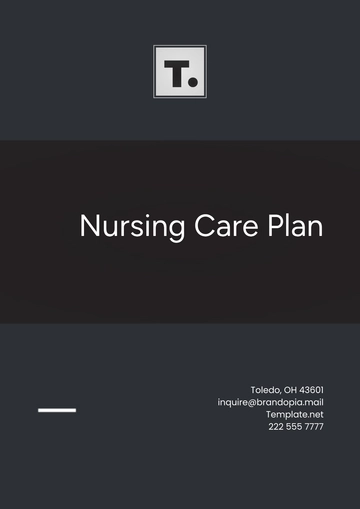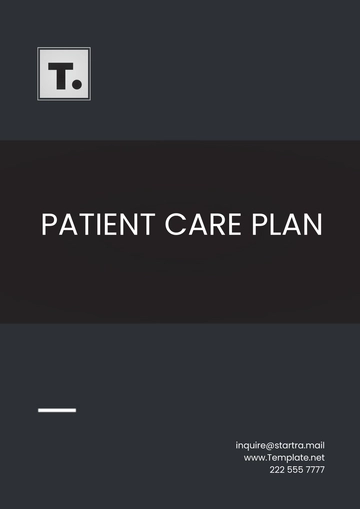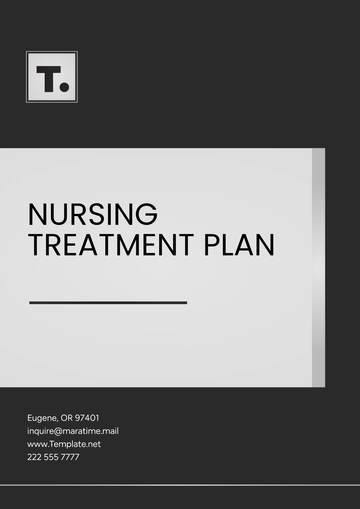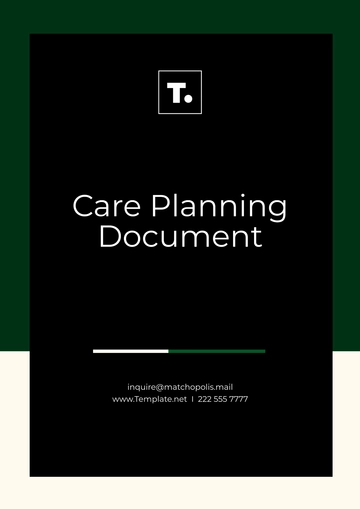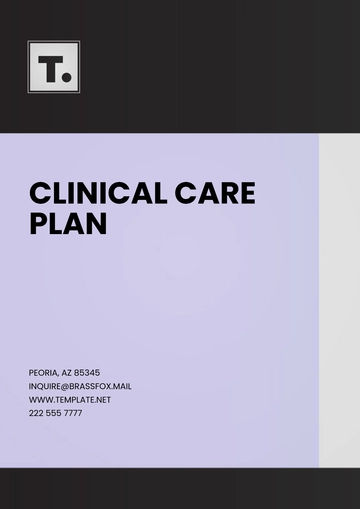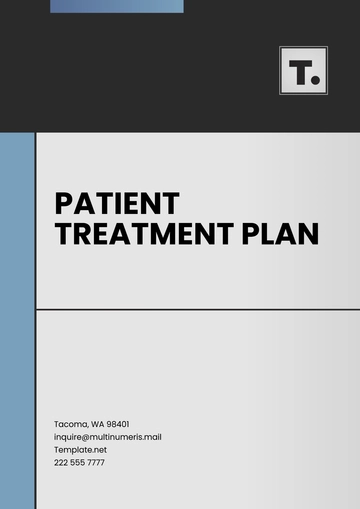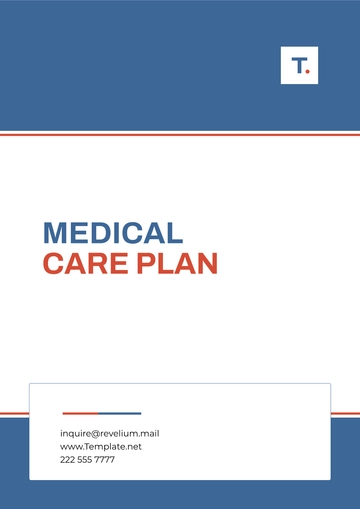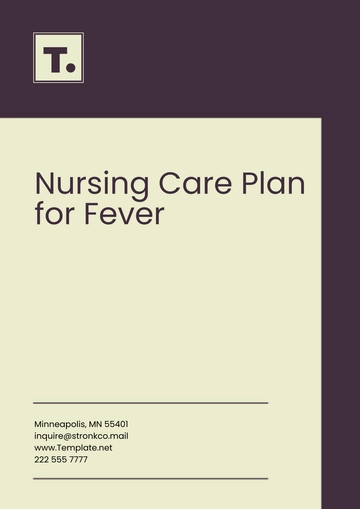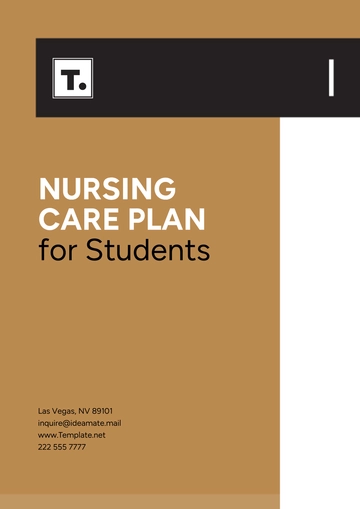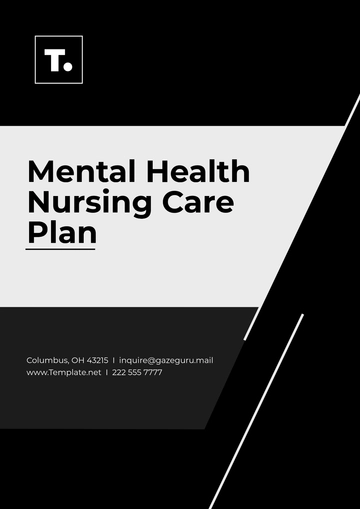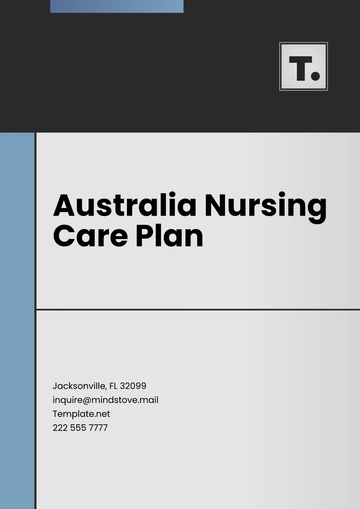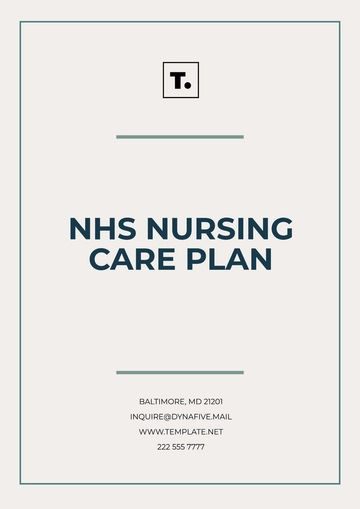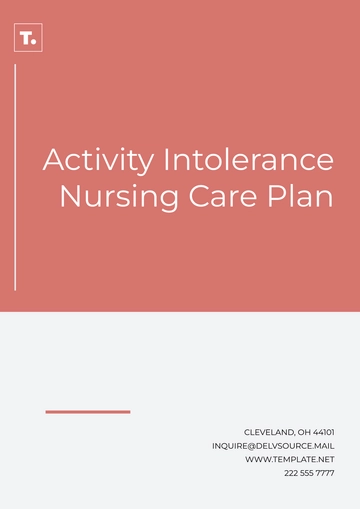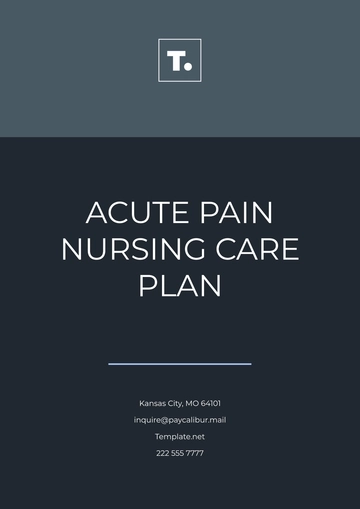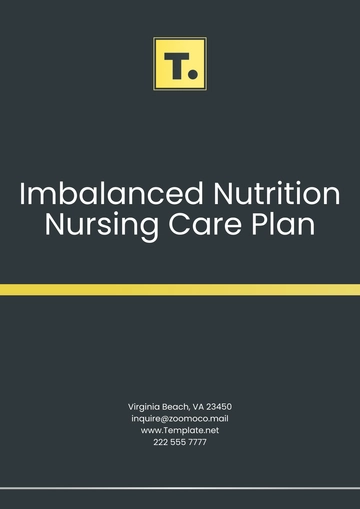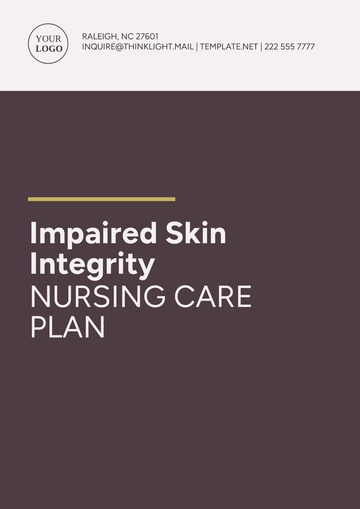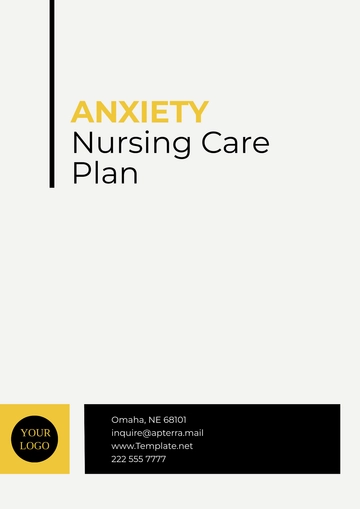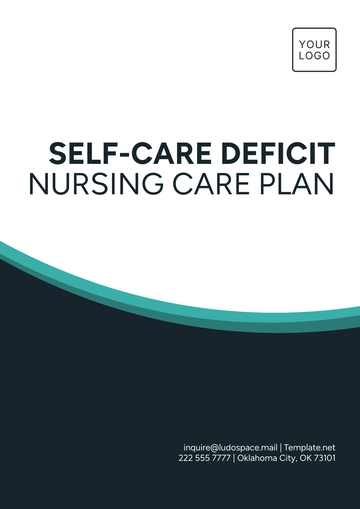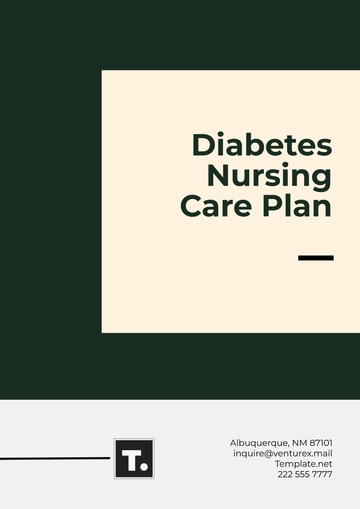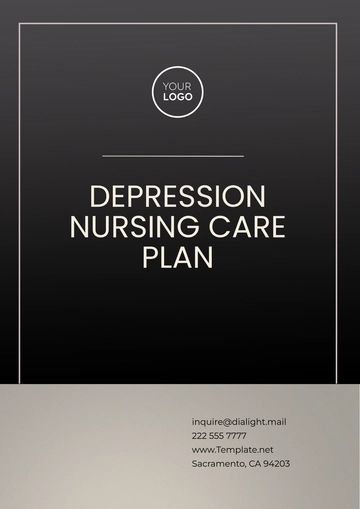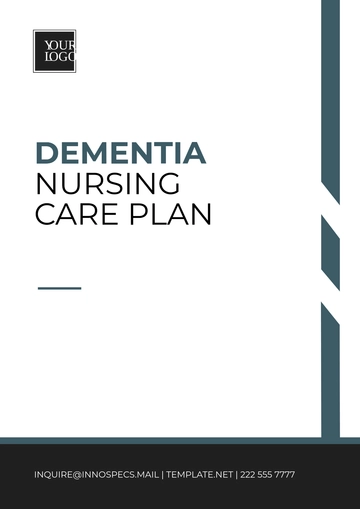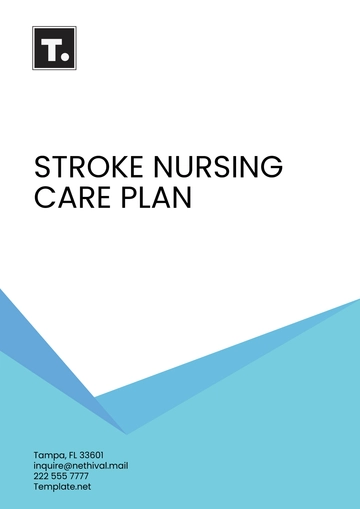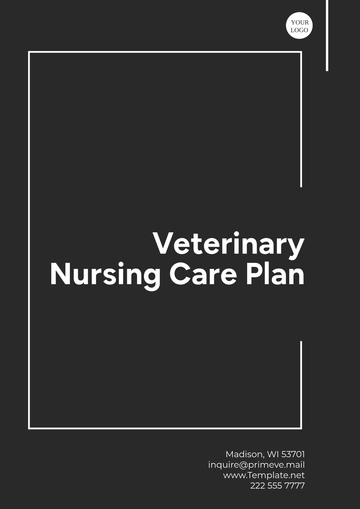Free Stroke Nursing Care Plan
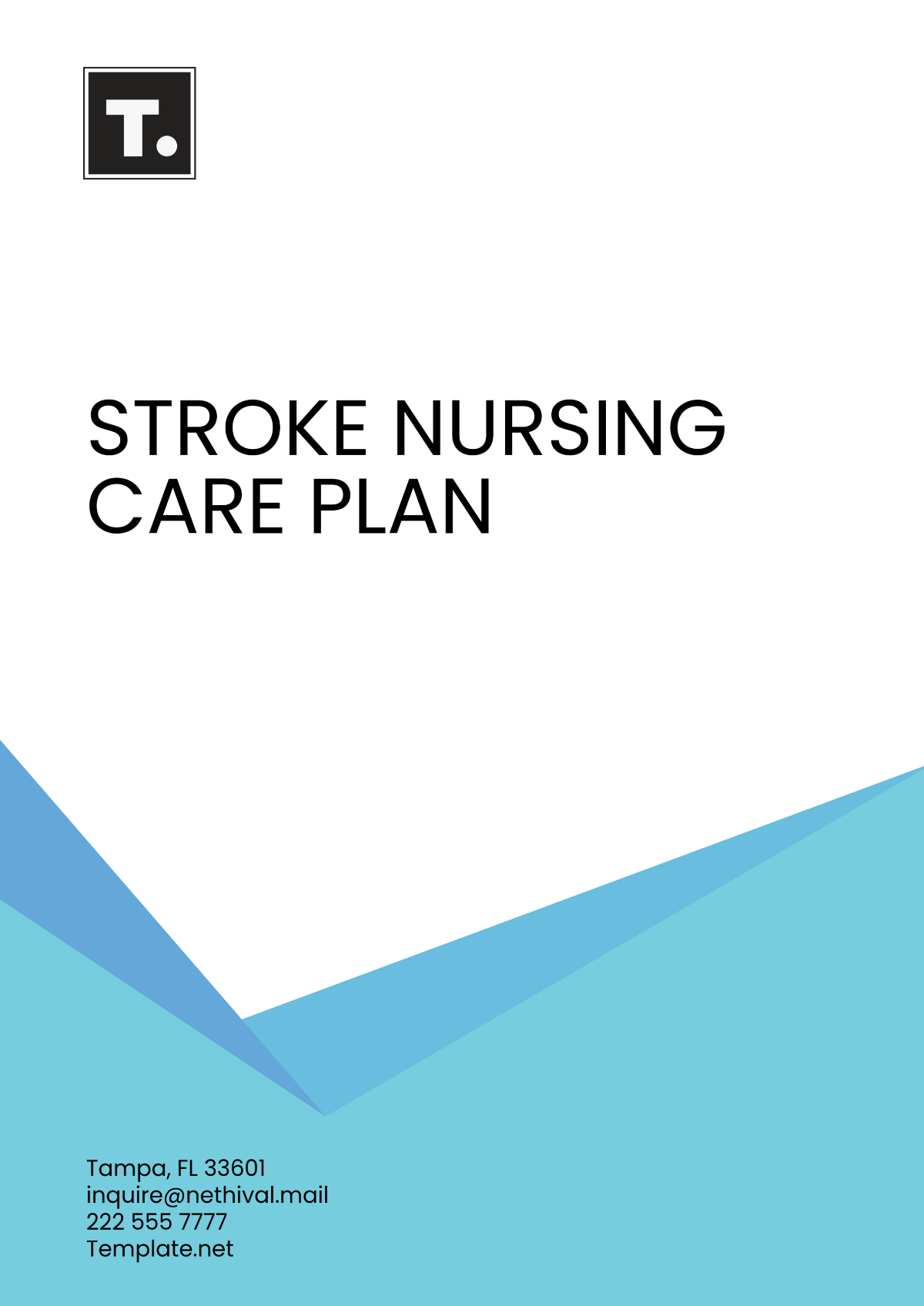
Prepared by: [YOUR NAME]
Email: [YOUR EMAIL]
Date: October 15, 2050
Patient Information:
Patient Name | Age | Gender | Medical Record Number |
|---|---|---|---|
Jasen Gaylord | 68 | Male | 123456789 |
Stroke Nursing Diagnosis:
Impaired Physical Mobility related to hemiparesis on the right side as evidenced by inability to move right arm and leg.
Risk for Aspiration related to difficulty swallowing (dysphagia).
Acute Pain related to muscle stiffness and spasms post-stroke.
Deficient Knowledge regarding stroke recovery and prevention strategies.
Goals and Outcomes:
Goal Number | Goal Description | Expected Outcome | Target Date |
|---|---|---|---|
1 | Improve physical mobility and strength on the right side. | Patient will demonstrate increased range of motion (ROM) in the right arm and leg. | November 15, 2050 |
2 | Prevent aspiration and choking during meals. | Patient will tolerate soft foods without coughing or choking. | November 30, 2050 |
3 | Reduce pain and discomfort caused by muscle stiffness. | Patient will report pain level ≤ 3 on a scale of 1-10. | November 25, 2050 |
4 | Educate patient and family on stroke recovery and prevention. | Patient and family will demonstrate understanding of stroke prevention strategies. | December 5, 2050 |
Nursing Interventions and Rationales:
Impaired Physical Mobility:
Intervention: Assist patient with passive range of motion exercises twice a day.
Rationale: Helps prevent contractures and improve muscle function, promoting better mobility.
Intervention: Encourage patient to perform active range of motion exercises with assistance as tolerated.
Rationale: Promotes muscle strength and joint flexibility, which aids in recovery.
Risk for Aspiration:
Intervention: Position patient upright (90-degree angle) during and after meals.
Rationale: Helps reduce the risk of food or liquid entering the airway and causing aspiration.
Intervention: Consult speech therapist for evaluation and recommendation of modified diet and swallowing techniques.
Rationale: Ensures safe swallowing techniques and appropriate diet to minimize aspiration risk.
Acute Pain:
Intervention: Administer prescribed analgesics as needed, monitor pain levels every 4 hours.
Rationale: Effective pain management reduces discomfort and aids in patient participation in rehabilitation activities.
Intervention: Apply heat or cold packs to affected muscles as tolerated.
Rationale: Heat or cold therapy can reduce muscle spasms and alleviate pain.
Deficient Knowledge:
Intervention: Educate patient and family about stroke, its impact, and recovery process during daily visits.
Rationale: Knowledge empowers the patient and family to engage in recovery efforts and reduce anxiety.
Intervention: Provide written materials on stroke prevention and lifestyle modifications (e.g., diet, exercise, smoking cessation).
Rationale: Helps reinforce teaching and supports long-term stroke prevention.
Evaluation:
Goal Number | Outcome Achieved | Modifications Needed | Date |
|---|---|---|---|
1 | Patient demonstrates improved right arm and leg mobility. | No | November 15, 2050 |
2 | No aspiration incidents during meals. | No | November 30, 2050 |
3 | Pain level decreased to 2/10 after intervention. | Yes | November 25, 2050 |
4 | Patient and family show understanding of stroke prevention. | No | December 5, 2050 |
Notes:
The patient’s stroke recovery will require ongoing adjustments to the care plan as progress is monitored.
Continuous communication between nursing staff, physical therapy, and other healthcare providers is essential for optimal care.
- 100% Customizable, free editor
- Access 1 Million+ Templates, photo’s & graphics
- Download or share as a template
- Click and replace photos, graphics, text, backgrounds
- Resize, crop, AI write & more
- Access advanced editor
The Stroke Nursing Care Plan Template from Template.net provides a comprehensive, customizable, and editable solution for healthcare professionals. Designed to assist in patient care, this template allows easy updates using the AI Editor Tool, ensuring personalized treatment plans. Save time and improve care quality with this versatile, user-friendly resource for nursing teams.
You may also like
- Finance Plan
- Construction Plan
- Sales Plan
- Development Plan
- Career Plan
- Budget Plan
- HR Plan
- Education Plan
- Transition Plan
- Work Plan
- Training Plan
- Communication Plan
- Operation Plan
- Health And Safety Plan
- Strategy Plan
- Professional Development Plan
- Advertising Plan
- Risk Management Plan
- Restaurant Plan
- School Plan
- Nursing Home Patient Care Plan
- Nursing Care Plan
- Plan Event
- Startup Plan
- Social Media Plan
- Staffing Plan
- Annual Plan
- Content Plan
- Payment Plan
- Implementation Plan
- Hotel Plan
- Workout Plan
- Accounting Plan
- Campaign Plan
- Essay Plan
- 30 60 90 Day Plan
- Research Plan
- Recruitment Plan
- 90 Day Plan
- Quarterly Plan
- Emergency Plan
- 5 Year Plan
- Gym Plan
- Personal Plan
- IT and Software Plan
- Treatment Plan
- Real Estate Plan
- Law Firm Plan
- Healthcare Plan
- Improvement Plan
- Media Plan
- 5 Year Business Plan
- Learning Plan
- Marketing Campaign Plan
- Travel Agency Plan
- Cleaning Services Plan
- Interior Design Plan
- Performance Plan
- PR Plan
- Birth Plan
- Life Plan
- SEO Plan
- Disaster Recovery Plan
- Continuity Plan
- Launch Plan
- Legal Plan
- Behavior Plan
- Performance Improvement Plan
- Salon Plan
- Security Plan
- Security Management Plan
- Employee Development Plan
- Quality Plan
- Service Improvement Plan
- Growth Plan
- Incident Response Plan
- Basketball Plan
- Emergency Action Plan
- Product Launch Plan
- Spa Plan
- Employee Training Plan
- Data Analysis Plan
- Employee Action Plan
- Territory Plan
- Audit Plan
- Classroom Plan
- Activity Plan
- Parenting Plan
- Care Plan
- Project Execution Plan
- Exercise Plan
- Internship Plan
- Software Development Plan
- Continuous Improvement Plan
- Leave Plan
- 90 Day Sales Plan
- Advertising Agency Plan
- Employee Transition Plan
- Smart Action Plan
- Workplace Safety Plan
- Behavior Change Plan
- Contingency Plan
- Continuity of Operations Plan
- Health Plan
- Quality Control Plan
- Self Plan
- Sports Development Plan
- Change Management Plan
- Ecommerce Plan
- Personal Financial Plan
- Process Improvement Plan
- 30-60-90 Day Sales Plan
- Crisis Management Plan
- Engagement Plan
- Execution Plan
- Pandemic Plan
- Quality Assurance Plan
- Service Continuity Plan
- Agile Project Plan
- Fundraising Plan
- Job Transition Plan
- Asset Maintenance Plan
- Maintenance Plan
- Software Test Plan
- Staff Training and Development Plan
- 3 Year Plan
- Brand Activation Plan
- Release Plan
- Resource Plan
- Risk Mitigation Plan
- Teacher Plan
- 30 60 90 Day Plan for New Manager
- Food Safety Plan
- Food Truck Plan
- Hiring Plan
- Quality Management Plan
- Wellness Plan
- Behavior Intervention Plan
- Bonus Plan
- Investment Plan
- Maternity Leave Plan
- Pandemic Response Plan
- Succession Planning
- Coaching Plan
- Configuration Management Plan
- Remote Work Plan
- Self Care Plan
- Teaching Plan
- 100-Day Plan
- HACCP Plan
- Student Plan
- Sustainability Plan
- 30 60 90 Day Plan for Interview
- Access Plan
- Site Specific Safety Plan
